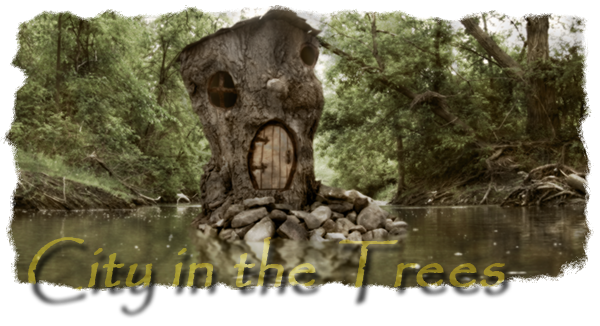So from what I’ve come to understand, this all started with a landslide in the early 1990s.
Kirby Road is a sideroad that runs across a certain portion
of York Region (which is immediately north of the City of Toronto) in its west
end. It crosses the region, with the odd dog’s leg here and there, from
Dufferin Street at the east end to the regional border at Albion-Vaughan Road
at the west. There is today, however, a gap in the road, from Huntington Road
on the west side to about half way to Hwy 27 on the east. Along this run, Kirby
Road’s course was substantially shaped by the course of the Humber River, and
at some point in the early 1990s, about 30 metres (100 feet or so) of Kirby
Road fell into the river below, causing the closure of that stretch to vehicle
traffic.
There is a newer, single-lane track that Google purports to
be “Kirby Road”, but I honestly don’t know if it were ever actually a stretch
intended for casual traffic. I have a feeling it was mainly there as a
convenience to Toronto and Region Conservation Authority (TRCA) vehicles
looking after the area.
It’s kind of a shame, because almost immediately east of
Huntington Road, Kirby is carried over the Humber by a bow arch bridge,
designed by the locally renowned Frank Barber, that’s verging on a century old.
I’ve heard it referred to as McEwen Bridge, and supposedly, it was built in 1923.
It’s in rough shape, frankly, and the region probably didn’t need much excuse
to close it to vehicular traffic in the first place. The landslide was
certainly justification, since the bridge served no other purpose at the time
than perhaps field access to a local farmer, and even that’s no longer an issue
anymore.
The bridge is kind of key to this, because it’s the main
reason I dropped in on the road from time to time over the years. It was one of
three such Frank Barber bow arch bridges over the Humber that I’m aware of, all
of which were still drivable well into the late 20th century. The
one on Langstaff Road was, I believe, the first to close; made redundant by a
road realignment at some point in the 70s or 80s.
The next to close was, I believe, the one on Major Mackenzie
Drive, sometime around 1990; again, due to road realignment. I’ve blogged about
that bridge more recently. It was completely demolished last autumn, without
replacement.
The last to close, I think, is the bridge in question; the one
on Kirby Road, which closed sometime in the early 1990s due to the landslide.
While the one on Langstaff seems to have a future as a quasi-official
pedestrian crossing, McEwen Bridge’s days might be numbered. That’s not really
my main point here, but it’s related to it directly, and I’ll come to that.
I was first out there in September of 2006, and I blogged about it here. Quite a while ago now; more time’s passed since then, probably,
than between when I was there and the original closure. I was there one rainy
late summer Saturday morning, by myself. I took the track sight-unseen, heading
down from the far east end to trek down to the bridge, if I could, at the far
west end. A round trip of about 2.5 km as the crow flies, though there’s a
non-inconsequential descent/climb about the halfway mark.
I’m reasonably sure this section was never paved (though apparently I formed just the opposite opinion back in 2006). It was
probably always a dirt road that could be considered two-laned only in the most
generous sense: if you were careful, you could probably avoid hitting someone
coming the other way. It would never have been a very travelled stretch at the
best of times.
Before I go on, let me give you a small sample of what I'm talking about... what's being lost. Here's a short video I shot in July of 2007 when I was out there with Larry. This is us heading down the wooded trail of the hillside down into the floodplain where the bridge is to be found. A bit of a challenge, but hardly Mount Everest. Look how beautiful it is. Shaded by trees. A clear, smooth, soft path. Interesting bits of nature within arm's reach all the way down.
This is what it looks like now...
A bit off to the side, you can actually glimpse the remnants of the trail, like some snake that's been run over by a truck full of boulders. Look, you can even see one of the old white rectangular trail markers painted onto that tree left of centre.
The first time I was there, I never saw another soul in the
two or three hours it took me to walk it and linger at the bridge. I felt
almost like I’d discovered something. I came back about a week later, partly to
pull a joke involving a ruined truck left on the old roadside, and partly to
explore a field on the north side of the river that’s subsequently been planted
for reforestation. That time I did see other people there, from a distance.
Every other time I’ve been there, as far as I can recall, I’ve been in the
company of someone else, and encountered at least one other hiker. But it was
always a narrow, natural trail through forest and fields; one benign enough
that you could—and I, for one, typically did—take the entire route barefoot
without much issue. Clay, mud, hard packed soil, soft pine needles, grass… the
river itself, if you so chose. It was a genuine cornucopia of pleasant tactile
variety on a trail that I’d characterize as moderately challenging, but
rewarding. Others must have thought so as well, because the trail became
increasingly popular as time went by. It became rare not to see half a dozen
cars parked haphazardly at the Huntington Road end on any given weekend.
But apparently, that wasn’t good enough for York Region and
the TRCA; oh, no. A moderately challenging nature walk on nature’s own terms?
Oh, Lord, we can’t have that! So right now, this very moment, the entire route
is in the process of being formalized. Sanitized. Wrapped in plastic and
for-your-protection paper cordoned like a hotel bathroom. This pearl of nature,
the gem in the raw, is being carved and shined up to be cast before swine…
widened, paved, guard railed, diverted. Y’know… “improved”. The pretty,
single-lane wander up and down the hillside, tricky as it was in wet weather…
it’s been eviscerated; the hillside scrapped out, replaced by some twisty
contrived granite intestine with hand rails that sits like a fat, spikey snake
on the face of the land. A shaded stroll once roofed by towering trees is now a
baking meander under unrelenting open sky. Awash with either asphalt or, worse,
pea gravel, it’s certainly no place for grounding anymore. No, if you want to
encounter nature here anymore, you’d better do it hermetically sealed in boots.
Pea gravel’s no fun even in sandals.
They’ve turned a quiet, slightly obscure two-hour hike, a
real communion with nature, into a half-hour forced march where nature intrudes
on a tongue of the city thrust into it. It’s no longer a place your kids wander
slowly, stopping to encounter flowers or interesting bugs right at their elbow;
it’s a place where they screech and run and get hustled through and nature is a
quaint remnant safely out of reach on either side of a ribbon of street. It’s
now a dog toilet for the kind of suburbanites who show up in 4-wheel drive SUVs
they wouldn’t dream of taking onto so much as a gravel road for fear they’d
chip the paint. Meanwhile, chain link fencing has been put up at either end of
McEwen Bridge. Fortunately, hikers have insisted their way through it, though
it remains as a grievous eyesore. The implication, to me, is that the bridge’s
days are numbered, and when the third phase of this vast “improvement” takes
place, its ancient rugged charm will probably be replaced by some pre-rusted
steel yawn dropped in situ; yes, you’re welcome; thank you very much Your
Majesty.
I hate what they’re doing to this trail. What they’ve done
to it. What they’re going to do. And it’s happening all over the fringe of
Toronto. Something not unlike it just happened not far to the west in the
vicinity of Bolton along Duffy’s Lane. Sporadic “improvements” have happened
along the closed section of Concession 11 on the Humber’s north side.
Meanwhile, they do everything they can to make it difficult to simply walk the
closed course of Huntington Road just north of the Kirby Road intersection.
They’re either “improving” the trails, or trying to make them impassible.
Can you people just not leave the trails alone? Let us enjoy
them for what they are? Limit yourselves to coming in every four or five years
to trim the overgrowth back and keep them passable? Must every trail either
have the charm officially formalized right out of it, or else be shuttered up
VERBOTTEN because it’s too expensive or impractical for you to ruin it? Can you
not JUST LET IT BE…?
Okay, that was my screed. Let me put my photos where my mouth is. Judge for yourself. Which of these experiences looks more like the one you'd like to have? If you were going to drive 30 to 90 minutes to get out here on a weekend, which views would you want ready to greet you when you stepped out of the car...?
Here's what the beginning of the hike at the east end of the road closure used to look like.
Here's how it looks now...
The rest of the trail to the hillside descent looks pretty much just the same. But here's what you used to see as you went along...
The now-eviscerated hillside, a sea of organized gravel and granite to push back the unseemly chaos of nature, used to look like this...
The walk along the bottom land to the river and McEwen Bridge used to look like this...




























2 comments:
Eventually, someone figures out how to make money off a place and they then ruin it. Same is happening near where I live along a seldom-traveled gravel road that leads to a lovely red 1890s truss bridge. They tore out the road east of the bridge to build a golf community.
It's terrible when they do things like that. There really should be some consideration for what was, and the simple pleasures of people to have access to it, imagine, remember, celebrate. What would it really have cost the owners of the golf course to have left a few acres alone?
Post a Comment